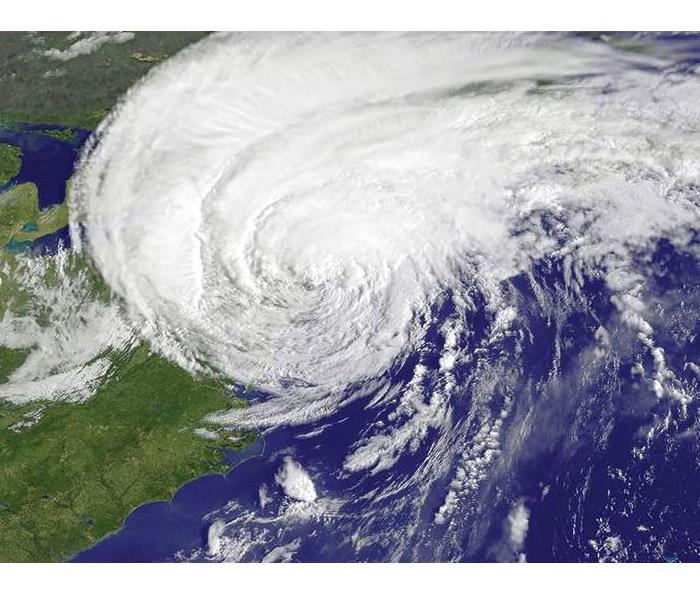Hurricane Evacuation Tips from NYC GOV
4/5/2019 (Permalink)
New York residents are not strangers to the extraordinary, but being prepared is always in fashion. Check out these evacuation tips from NYC.gov, being in the know is en vogue!
If You Must Evacuate
- Know your zone. Determine whether you live in an evacuation zone by using the Hurricane Evacuation Zone Finder at NYC.gov/knowyourzone or call 311 (212-639-9675 for Video Relay Service, or TTY: 212-504-4115). Zones are color-coded and labeled 1, 2, 3, 4, 5, and 6 when represented on a map. If your address is in one of the City’s hurricane evacuation zones, you may be ordered to evacuate if a hurricane threatens New York City.
- Evacuees should be prepared to stay with friends or family who live outside evacuation zone boundaries.
- If you cannot stay with friends or family, use the Hurricane Evacuation Zone Finder, or call 311 (212-639-9675 for Video Relay Service, or TTY: 212-504-4115) to identify which evacuation center is most appropriate for you.
- Evacuation information is subject to change. For the latest information, visit NYC.gov or call 311 (212-639-9675 for Video Relay Service, or TTY: 212-504-4115). Visit the MTA's website at www.mta.info or call 511 for the latest transit information. If you need assistance evacuating during an emergency, please call 311.
- Information on evacuation centers, including accessibility features, is subject to change. Please visit NYC.gov/knowyourzone or contact 311 for updated reports on building status and accessibility features.
- When a coastal storm is approaching, the City may order the evacuation of neighborhoods in danger of flooding from storm surge, starting with zone 1 and adding more zones as needed. Zones will be evacuated depending on life safety-related threats from a hurricane’s forecasted strength, track, and storm surge.
*If the City issues an evacuation order for your area, do so as directed.* The City will communicate through local media specific instructions about which areas of the city should evacuate. If a mandatory evacuation is issued, do so as directed. Use public transportation if possible, keeping in mind that public transportation may shut down hours before the storm. For additional information about how to evacuate, including transportation options, please contact 311 (212-639-9675 for Video Relay Service, or TTY: 212-504-4115).
How to Evacuate
Since flooding and high winds can occur many hours before a hurricane makes landfall, evacuees should leave their homes immediately if instructed to do so by emergency officials. The City strongly recommends evacuees stay with friends or family who live outside evacuation zones. Evacuees should plan their mode of transportation with special care and take the following steps:
- Plan to use mass transit as much as possible, as it offers the fastest way to reach your destination. Using mass transit reduces the volume of evacuees on the roadways, reducing the risk of dangerous and time-consuming traffic delays. Please note that public transportation may shut down hours before the storm.
- Listen carefully to local news media, which will broadcast reports about weather and transportation conditions.
- Leave early. Hazards like strong winds, heavy rain, and flooding may force the early closure of roads, bridges, and tunnels. Also, evacuate early if you rely on elevators to get out of your building. Elevators may be out of service and may not be available at all times.
- Allow additional travel time and consider your transportation, dietary, and medical needs (oxygen, extra batteries/chargers, eyeglasses, prescriptions, etc.). Bring all medications with you and have contact information for your health providers written down to carry with you.
- The City advises against car travel during an evacuation. The City will be working hard to keep roads clear, but traffic is unavoidable in any evacuation.
- Be ready for a long, slow trip. The City will monitor conditions along major transportation routes to help vehicular traffic flow as smoothly as possible.
- Evacuation route signs point the way to high ground, away from coastal flooding. If you must evacuate, leave your home before storm conditions make roadways unsafe.
- Stay tuned to local media for information about road and bridge closures. New York State's 511 can help you monitor traffic on State roads.
- Many evacuation centers do NOT have parking available.
- Wind restrictions and vehicle bans may be implemented on area bridges. Large vehicles such as trailers, trucks, other vehicles with higher wind profiles will be restricted sooner than cars or SUVs.
- In any significant rainstorm, *avoid driving through standing water.*






 24/7 Emergency Service
24/7 Emergency Service
